Liangyue Li
MERIT: A Merchant Incentive Ranking Model for Hotel Search & Ranking
Jun 10, 2025Abstract:Online Travel Platforms (OTPs) have been working on improving their hotel Search & Ranking (S&R) systems that facilitate efficient matching between consumers and hotels. Existing OTPs focus almost exclusively on improving platform revenue. In this work, we take a first step in incorporating hotel merchants' objectives into the design of hotel S&R systems to achieve an incentive loop: the OTP tilts impressions and better-ranked positions to merchants with high quality, and in return, the merchants provide better service to consumers. Three critical design challenges need to be resolved to achieve this incentive loop: Matthew Effect in the consumer feedback-loop, unclear relation between hotel quality and performance, and conflicts between short-term and long-term revenue. To address these challenges, we propose MERIT, a MERchant IncenTive ranking model, which can simultaneously take the interests of merchants and consumers into account. We define a new Merchant Competitiveness Index (MCI) to represent hotel merchant quality and propose a new Merchant Tower to model the relation between MCI and ranking scores. Also, we design a monotonic structure for Merchant Tower to provide a clear relation between hotel quality and performance. Finally, we propose a Multi-objective Stratified Pairwise Loss, which can mitigate the conflicts between OTP's short-term and long-term revenue. The offline experiment results indicate that MERIT outperforms these methods in optimizing the demands of consumers and merchants. Furthermore, we conduct an online A/B test and obtain an improvement of 3.02% for the MCI score.
Think Thrice Before You Act: Progressive Thought Refinement in Large Language Models
Oct 17, 2024



Abstract:Recent advancements in large language models (LLMs) have demonstrated that progressive refinement, rather than providing a single answer, results in more accurate and thoughtful outputs. However, existing methods often rely heavily on supervision signals to evaluate previous responses, making it difficult to assess output quality in more open-ended scenarios effectively. Additionally, these methods are typically designed for specific tasks, which limits their generalization to new domains. To address these limitations, we propose Progressive Thought Refinement (PTR), a framework that enables LLMs to refine their responses progressively. PTR operates in two phases: (1) Thought data construction stage: We propose a weak and strong model collaborative selection strategy to build a high-quality progressive refinement dataset to ensure logical consistency from thought to answers, and the answers are gradually refined in each round. (2) Thought-Mask Fine-Tuning Phase: We design a training structure to mask the "thought" and adjust loss weights to encourage LLMs to refine prior thought, teaching them to implicitly understand "how to improve" rather than "what is correct." Experimental results show that PTR significantly enhances LLM performance across ten diverse tasks (avg. from 49.6% to 53.5%) without task-specific fine-tuning. Notably, in more open-ended tasks, LLMs also demonstrate substantial improvements in the quality of responses beyond mere accuracy, suggesting that PTR truly teaches LLMs to self-improve over time.
Retrieval-style In-Context Learning for Few-shot Hierarchical Text Classification
Jun 25, 2024Abstract:Hierarchical text classification (HTC) is an important task with broad applications, while few-shot HTC has gained increasing interest recently. While in-context learning (ICL) with large language models (LLMs) has achieved significant success in few-shot learning, it is not as effective for HTC because of the expansive hierarchical label sets and extremely-ambiguous labels. In this work, we introduce the first ICL-based framework with LLM for few-shot HTC. We exploit a retrieval database to identify relevant demonstrations, and an iterative policy to manage multi-layer hierarchical labels. Particularly, we equip the retrieval database with HTC label-aware representations for the input texts, which is achieved by continual training on a pretrained language model with masked language modeling (MLM), layer-wise classification (CLS, specifically for HTC), and a novel divergent contrastive learning (DCL, mainly for adjacent semantically-similar labels) objective. Experimental results on three benchmark datasets demonstrate superior performance of our method, and we can achieve state-of-the-art results in few-shot HTC.
Exploring User Retrieval Integration towards Large Language Models for Cross-Domain Sequential Recommendation
Jun 05, 2024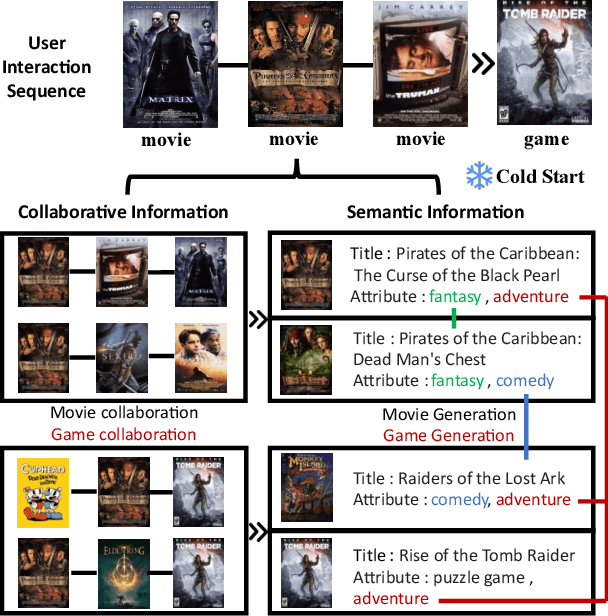

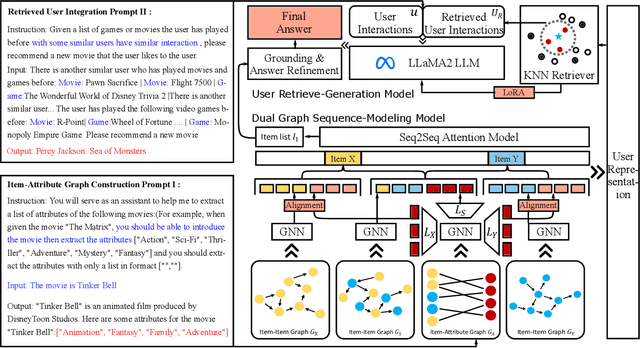

Abstract:Cross-Domain Sequential Recommendation (CDSR) aims to mine and transfer users' sequential preferences across different domains to alleviate the long-standing cold-start issue. Traditional CDSR models capture collaborative information through user and item modeling while overlooking valuable semantic information. Recently, Large Language Model (LLM) has demonstrated powerful semantic reasoning capabilities, motivating us to introduce them to better capture semantic information. However, introducing LLMs to CDSR is non-trivial due to two crucial issues: seamless information integration and domain-specific generation. To this end, we propose a novel framework named URLLM, which aims to improve the CDSR performance by exploring the User Retrieval approach and domain grounding on LLM simultaneously. Specifically, we first present a novel dual-graph sequential model to capture the diverse information, along with an alignment and contrastive learning method to facilitate domain knowledge transfer. Subsequently, a user retrieve-generation model is adopted to seamlessly integrate the structural information into LLM, fully harnessing its emergent inferencing ability. Furthermore, we propose a domain-specific strategy and a refinement module to prevent out-of-domain generation. Extensive experiments on Amazon demonstrated the information integration and domain-specific generation ability of URLLM in comparison to state-of-the-art baselines. Our code is available at https://github.com/TingJShen/URLLM
Side Information-Driven Session-based Recommendation: A Survey
Feb 27, 2024


Abstract:The session-based recommendation (SBR) garners increasing attention due to its ability to predict anonymous user intents within limited interactions. Emerging efforts incorporate various kinds of side information into their methods for enhancing task performance. In this survey, we thoroughly review the side information-driven session-based recommendation from a data-centric perspective. Our survey commences with an illustration of the motivation and necessity behind this research topic. This is followed by a detailed exploration of various benchmarks rich in side information, pivotal for advancing research in this field. Moreover, we delve into how these diverse types of side information enhance SBR, underscoring their characteristics and utility. A systematic review of research progress is then presented, offering an analysis of the most recent and representative developments within this topic. Finally, we present the future prospects of this vibrant topic.
Modeling User Viewing Flow using Large Language Models for Article Recommendation
Nov 12, 2023Abstract:This paper proposes the User Viewing Flow Modeling (SINGLE) method for the article recommendation task, which models the user constant preference and instant interest from user-clicked articles. Specifically, we employ a user constant viewing flow modeling method to summarize the user's general interest to recommend articles. We utilize Large Language Models (LLMs) to capture constant user preferences from previously clicked articles, such as skills and positions. Then we design the user instant viewing flow modeling method to build interactions between user-clicked article history and candidate articles. It attentively reads the representations of user-clicked articles and aims to learn the user's different interest views to match the candidate article. Our experimental results on the Alibaba Technology Association (ATA) website show the advantage of SINGLE, which achieves 2.4% improvements over previous baseline models in the online A/B test. Our further analyses illustrate that SINGLE has the ability to build a more tailored recommendation system by mimicking different article viewing behaviors of users and recommending more appropriate and diverse articles to match user interests.
Learning Optimal Propagation for Graph Neural Networks
May 06, 2022
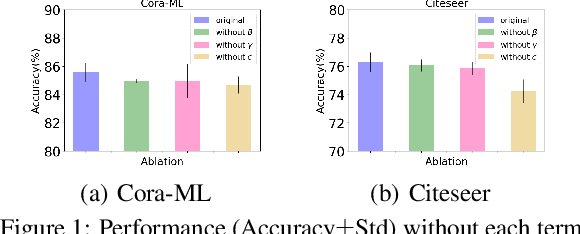
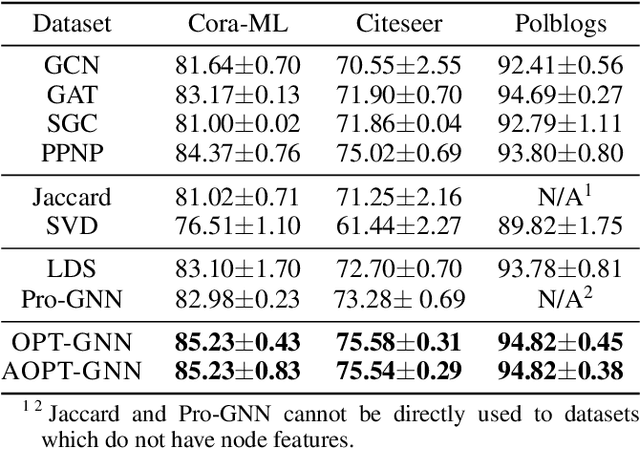
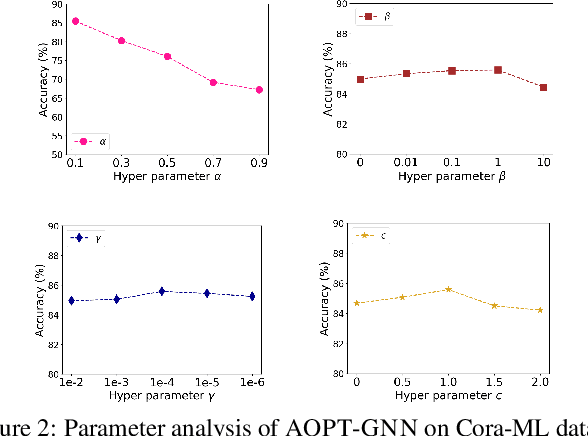
Abstract:Graph Neural Networks (GNNs) have achieved tremendous success in a variety of real-world applications by relying on the fixed graph data as input. However, the initial input graph might not be optimal in terms of specific downstream tasks, because of information scarcity, noise, adversarial attacks, or discrepancies between the distribution in graph topology, features, and groundtruth labels. In this paper, we propose a bi-level optimization-based approach for learning the optimal graph structure via directly learning the Personalized PageRank propagation matrix as well as the downstream semi-supervised node classification simultaneously. We also explore a low-rank approximation model for further reducing the time complexity. Empirical evaluations show the superior efficacy and robustness of the proposed model over all baseline methods.
Detecting Topology Attacks against Graph Neural Networks
Apr 26, 2022



Abstract:Graph neural networks (GNNs) have been widely used in many real applications, and recent studies have revealed their vulnerabilities against topology attacks. To address this issue, existing efforts have mainly been dedicated to improving the robustness of GNNs, while little attention has been paid to the detection of such attacks. In this work, we study the victim node detection problem under topology attacks against GNNs. Our approach is built upon the key observation rooted in the intrinsic message passing nature of GNNs. That is, the neighborhood of a victim node tends to have two competing group forces, pushing the node classification results towards the original label and the targeted label, respectively. Based on this observation, we propose to detect victim nodes by deliberately designing an effective measurement of the neighborhood variance for each node. Extensive experimental results on four real-world datasets and five existing topology attacks show the effectiveness and efficiency of the proposed detection approach.
Ranking with Adaptive Neighbors
Mar 14, 2018



Abstract:Retrieving the most similar objects in a large-scale database for a given query is a fundamental building block in many application domains, ranging from web searches, visual, cross media, and document retrievals. State-of-the-art approaches have mainly focused on capturing the underlying geometry of the data manifolds. Graph-based approaches, in particular, define various diffusion processes on weighted data graphs. Despite success, these approaches rely on fixed-weight graphs, making ranking sensitive to the input affinity matrix. In this study, we propose a new ranking algorithm that simultaneously learns the data affinity matrix and the ranking scores. The proposed optimization formulation assigns adaptive neighbors to each point in the data based on the local connectivity, and the smoothness constraint assigns similar ranking scores to similar data points. We develop a novel and efficient algorithm to solve the optimization problem. Evaluations using synthetic and real datasets suggest that the proposed algorithm can outperform the existing methods.
The Child is Father of the Man: Foresee the Success at the Early Stage
Aug 01, 2015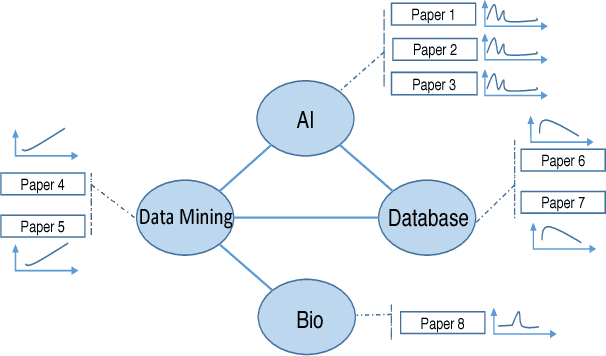
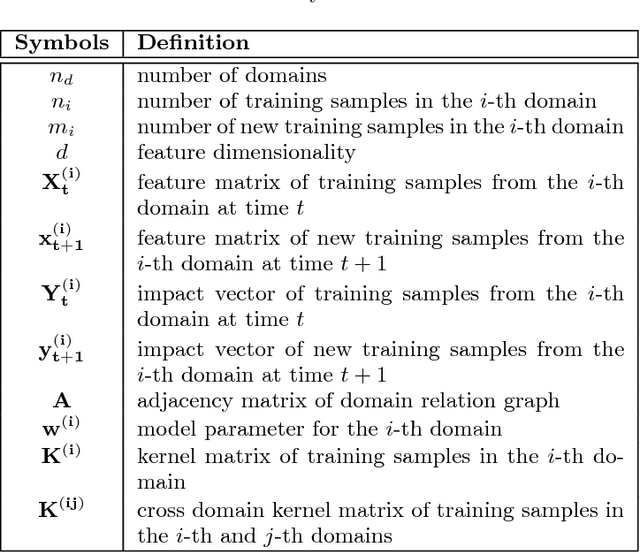

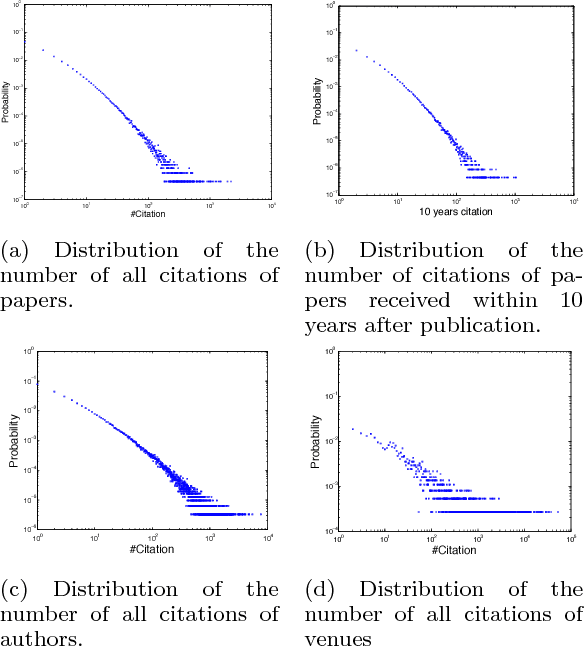
Abstract:Understanding the dynamic mechanisms that drive the high-impact scientific work (e.g., research papers, patents) is a long-debated research topic and has many important implications, ranging from personal career development and recruitment search, to the jurisdiction of research resources. Recent advances in characterizing and modeling scientific success have made it possible to forecast the long-term impact of scientific work, where data mining techniques, supervised learning in particular, play an essential role. Despite much progress, several key algorithmic challenges in relation to predicting long-term scientific impact have largely remained open. In this paper, we propose a joint predictive model to forecast the long-term scientific impact at the early stage, which simultaneously addresses a number of these open challenges, including the scholarly feature design, the non-linearity, the domain-heterogeneity and dynamics. In particular, we formulate it as a regularized optimization problem and propose effective and scalable algorithms to solve it. We perform extensive empirical evaluations on large, real scholarly data sets to validate the effectiveness and the efficiency of our method.
 Add to Chrome
Add to Chrome Add to Firefox
Add to Firefox Add to Edge
Add to Edge